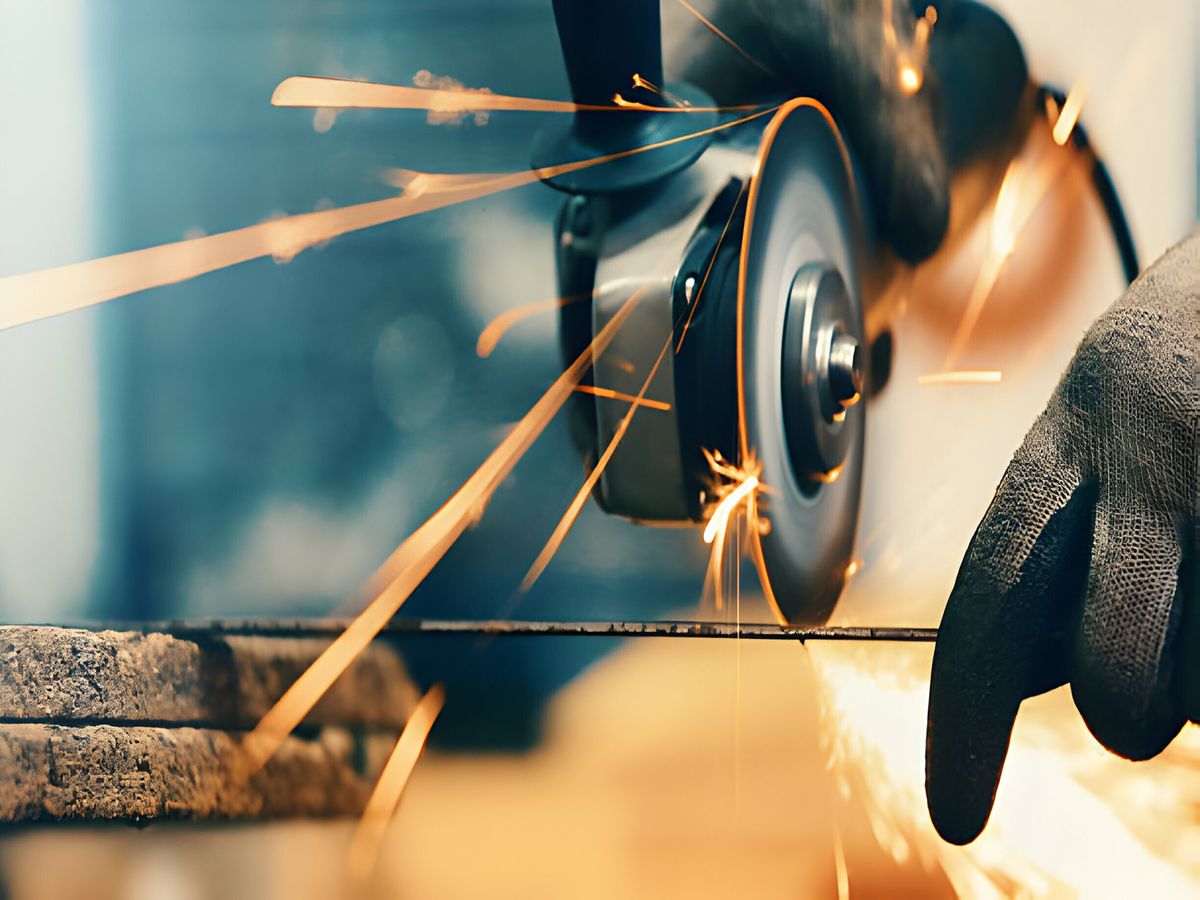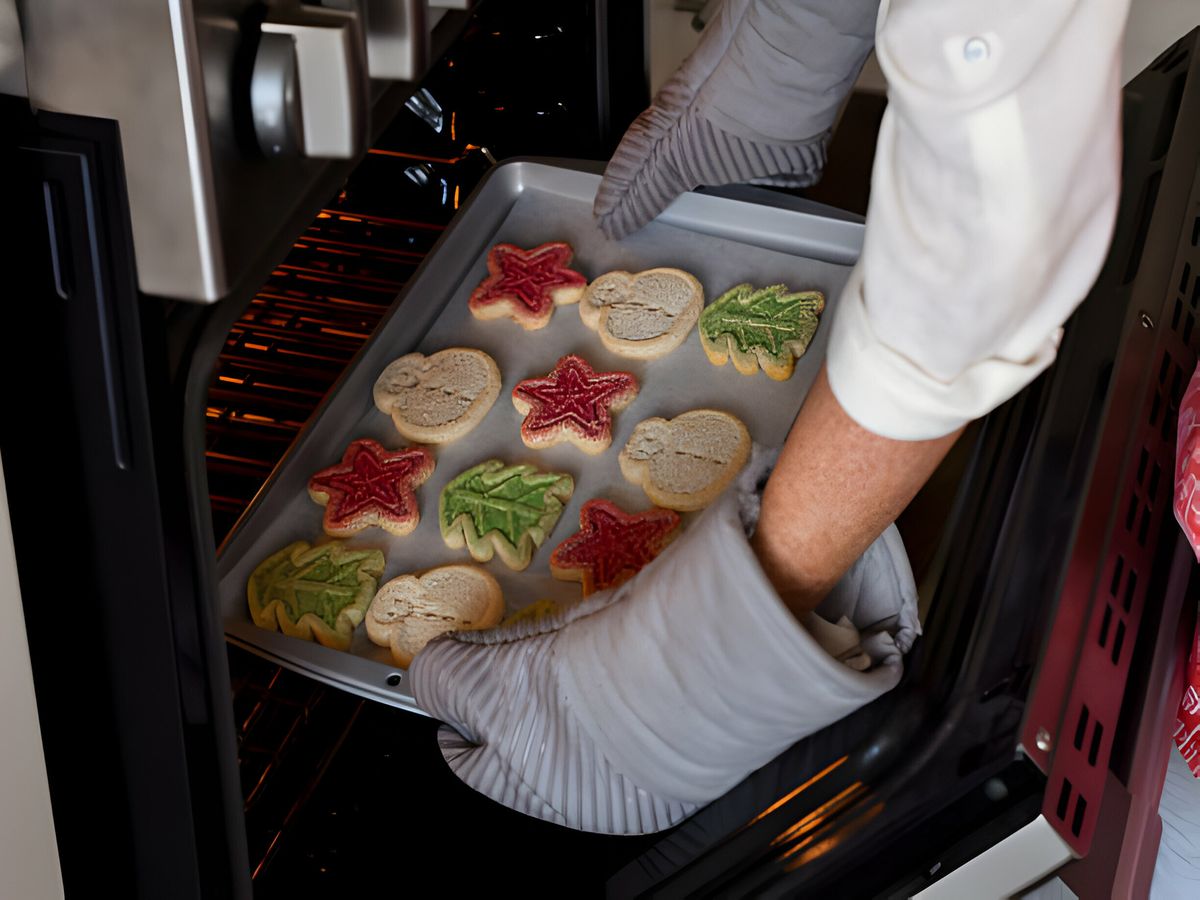Importance of Cut Gloves
Cut gloves, also known as cut-resistant gloves, are specialized gloves designed to protect hands from cuts, slashes, and abrasions. They are typically made from materials like high-performance fibers, such as Kevlar, Dyneema, or stainless steel mesh, which provide resistance to sharp objects like knives, blades, or glass shards.
These gloves are essential in various industries where workers are exposed to sharp objects or machinery, such as food processing, manufacturing, construction, and even certain hobbies like woodworking or crafting. By wearing cut gloves, workers can significantly reduce the risk of hand injuries, including lacerations and punctures, thereby promoting safety in the workplace.
Brief Overview of Different Types of Cut Proof Gloves
There are several types of cut proof gloves available, each offering different levels of protection and suited for specific tasks or environments:
Kevlar Gloves: Made from a lightweight and durable material, Kevlar gloves provide excellent cut resistance while remaining flexible and comfortable to wear.
Dyneema Gloves: Dyneema is one of the strongest fibers in the world, making gloves made from this material highly resistant to cuts and abrasions. They are often used in industries where dexterity and sensitivity are crucial.
Stainless Steel Mesh Gloves: These gloves incorporate stainless steel mesh into their construction, providing exceptional protection against sharp objects. They are commonly used in meat processing and other industries where there is a risk of knife cuts.
Coated Gloves: Some cut-resistant gloves feature a coating, such as nitrile or polyurethane, which enhances grip and durability while maintaining cut resistance.
Importance of Cut Resistant Gloves in Various Industries
Cut resistant gloves play a vital role in ensuring the safety and well-being of workers across a wide range of industries:
Food Processing: In environments where sharp knives and machinery are used to process meat, fruits, or vegetables, cut-resistant gloves protect workers from accidental cuts and lacerations.
Manufacturing: Workers in manufacturing plants often handle sharp materials or use machinery that poses a risk of hand injuries. Cut gloves help prevent accidents and maintain productivity by minimizing downtime due to injuries.
Construction: Construction workers deal with sharp tools and materials daily. Cut-resistant gloves provide an extra layer of protection against cuts and punctures while performing tasks like handling glass, metal, or wood.
Healthcare: Healthcare professionals, such as nurses and doctors, use cut-resistant gloves when handling medical instruments or performing procedures that involve sharp objects. This helps reduce the risk of accidental needle sticks or cuts during patient care.
Overall, cut-resistant gloves are indispensable safety gear that not only protect workers’ hands but also contribute to a safer and more productive work environment across various industries.
Understanding Cut Glove
What Are Cut Gloves?
Cut gloves, also known as cut-resistant gloves, protect the wearer’s hands from cuts, slashes, and abrasions. Manufacturers construct these gloves using materials that resist sharp objects like knives, blades, glass, or metal shards. They come in various styles and designs to suit different industries and tasks, providing a crucial layer of protection for workers in environments where there’s a risk of hand injuries.
How Cut Gloves Work
Cut gloves work by incorporating materials that have high tensile strength and durability, making them resistant to cuts and punctures. These materials typically include high-performance fibers like Kevlar, Dyneema, or stainless steel mesh. When a sharp object comes into contact with the glove, the fibers in the material distribute the force of the impact, preventing the object from penetrating through the glove and causing injury to the wearer’s hand. The gloves may also feature additional coatings or layers to enhance grip, comfort, and durability while maintaining their cut-resistant properties.
Levels of Cut Resistance| Exploring the ANSI/ISEA Standards
The American National Standards Institute (ANSI) and the International Safety Equipment Association (ISEA) have established standards for measuring and categorizing the level of cut resistance in gloves. These standards use a scale ranging from A1 to A9, with A1 being the lowest and A9 being the highest level of cut resistance. The ratings are based on the results of standardized tests that measure the force required to cut through the material of the glove. Gloves with higher ANSI/ISEA ratings offer greater protection against cuts and are suitable for tasks involving sharper objects or a higher risk of injury.
Common Materials Used in Cut-Resistant Gloves
Cut-resistant gloves are made from a variety of materials, each offering different levels of protection and suitability for specific applications:
- Kevlar: Known for its strength and durability, Kevlar fibers provide excellent cut resistance while remaining lightweight and flexible.
- Dyneema: Dyneema is one of the strongest synthetic fibers, offering superior cut resistance and dexterity. Gloves made from Dyneema are often used in industries where precision and sensitivity are essential.
- Stainless Steel Mesh: Stainless steel mesh gloves provide exceptional protection against cuts and punctures, making them ideal for industries such as meat processing and food handling.
- Composite Materials: Some cut-resistant gloves combine multiple materials to achieve optimal protection and flexibility. These may include blends of Kevlar, Dyneema, and other synthetic fibers, as well as coatings or laminates for added durability and comfort.
By understanding the construction, function, standards, and materials used in cut-resistant gloves, workers can make informed decisions to select the most appropriate gloves for their specific tasks and environments, thereby minimizing the risk of hand injuries and ensuring workplace safety.
Types of Cut Glove
Cut Resistant Work Gloves
Cut-resistant work gloves are designed for use in various industries and environments where workers are exposed to sharp objects, machinery, or materials that pose a risk of hand injuries. These gloves offer protection against cuts, slashes, and abrasions while providing comfort, dexterity, and durability for tasks such as handling sharp tools, operating machinery, or working with sharp materials. They come in different styles, materials, and levels of cut resistance to suit the specific needs and requirements of different work environments.
Kitchen Cutting Gloves
In culinary settings, chefs and home cooks use specially designed kitchen cutting gloves to protect their hands while preparing food with sharp knives or other kitchen tools. Manufacturers typically make these gloves from materials like high-performance fibers or stainless steel mesh, providing cut resistance and preventing accidental cuts or injuries during food preparation. Professional chefs commonly use them, as do home cooks who prioritize safety and comfort in the kitchen.
Meat Cutting Gloves
Meat cutting gloves are specialized gloves used in meat processing and butchery to protect hands from cuts and punctures while handling sharp knives and cutting tools. These gloves are usually made from materials like stainless steel mesh or high-strength fibers to provide maximum cut resistance and durability. They are essential for ensuring the safety of workers in meat processing facilities and reducing the risk of contamination from cuts or injuries during meat handling and processing.
Anti Cut Gloves| Exploring Specialized Designs
Anti cut gloves refer to gloves that are specifically designed to protect against cuts and slashes. These gloves may include specialized features such as reinforced fingertips, impact protection, or additional layers of cut-resistant material in high-risk areas. They are often used in industries where workers face increased risk of hand injuries, such as construction, manufacturing, or automotive repair. These come in a variety of designs and configurations to suit different applications and user preferences.
Cute Gloves vs Cut Gloves| Clarifying the Difference
Cute gloves typically refer to stylish gloves worn for warmth or accessorizing, often made from materials like wool, leather, or synthetic fabrics. On the other hand, “cut gloves are specialized gloves designed specifically to protect against cuts, slashes, and abrasions, usually made from materials like Kevlar, Dyneema, or stainless steel mesh. While both types of gloves serve different purposes, it’s essential to differentiate between them to ensure proper hand protection in different situations. Cute gloves may not provide adequate protection against sharp objects, whereas these gloves are specifically engineered for that purpose, prioritizing safety over style.
Choosing the Best Cut Gloves
Factors to Consider When Selecting Cut Gloves
When selecting cut gloves, several factors should be considered to ensure they meet the specific needs and requirements of the task or environment:
Level of cut resistance: Choose gloves with an appropriate level of cut resistance based on the hazards present in the workplace.
Material: Consider the material composition of the gloves, such as Kevlar, Dyneema, or stainless steel, to ensure they offer adequate protection against cuts and abrasions.
Comfort and fit: Select gloves that are comfortable to wear for extended periods and provide a snug fit to minimize the risk of slippage or discomfort.
Dexterity: Balance the need for dexterity with the level of protection required for the task, opting for gloves that allow for adequate finger mobility without compromising safety.
Grip: Look for gloves with a textured or coated surface to improve grip and handling of objects, especially in wet or oily conditions.
Durability: Choose gloves that are durable and resistant to wear and tear, ensuring they maintain their protective properties over time.
Level 5 Cut Resistant Gloves| Are They Always the Best Choice?
While level 5 cut-resistant gloves offer high protection against cuts, they may not always be the best choice depending on the specific requirements of the task or environment:
- Level 5 gloves may sacrifice some dexterity and flexibility compared to lower-level gloves, which could affect performance in tasks requiring intricate hand movements.
- In environments with lower cut hazards, opting for gloves with a lower cut resistance level may provide sufficient protection while allowing for better dexterity and comfort.
- Consider other factors such as grip, comfort, and durability when selecting gloves, as these can also impact overall performance and safety.
Comparing Different Brands and Models
When comparing different brands and models of cut-resistant gloves, it’s essential to consider factors such as
Material quality and composition: Evaluate the materials used in the gloves and their performance in terms of cut resistance, durability, and comfort.
ANSI/ISEA ratings: Look for gloves that meet or exceed industry standards for cut resistance, ensuring they provide adequate protection for the intended application.
User reviews and feedback: Consider feedback from other users or industry experts to gauge the performance and reliability of different glove brands and models.
Price and value: Balance the cost of the gloves with their overall quality, performance, and lifespan to determine the best value for your needs.
Durability vs. Dexterity| Striking the Right Balance
Balancing durability and dexterity is essential when selecting cut gloves:
- Choose gloves that offer a good balance between durability and dexterity, ensuring they provide adequate protection without sacrificing hand mobility or comfort.
- Consider the specific requirements of the task or environment when prioritizing durability over dexterity or vice versa.
- Look for gloves with reinforced areas or added layers of protection in high-wear areas to improve durability without compromising dexterity.
- Regularly inspect and replace gloves as needed to maintain optimal performance and safety in the workplace.
Applications of Cut Gloves
Industrial Settings| Manufacturing, Construction, and Mechanics
In manufacturing, construction, and mechanical industries, workers are often exposed to sharp objects, machinery, and tools that pose a risk of hand injuries. Cut-resistant gloves play a crucial role in protecting workers from cuts, slashes, and abrasions while performing tasks such as handling materials, operating machinery, or using tools. These gloves help reduce the risk of accidents and injuries in industrial settings, improving workplace safety and productivity.
Culinary Industry| Importance of Cut-Resistant Gloves in Kitchens
In the culinary industry, chefs and kitchen staff handle sharp knives and other cutting tools daily while preparing food. Cut-resistant gloves are essential for protecting their hands from accidental cuts and injuries during food preparation and handling. These gloves not only help prevent injuries but also promote hygiene by reducing the risk of contamination from cuts or wounds. They are an indispensable safety measure in commercial kitchens and food processing facilities, ensuring the well-being of kitchen staff and the quality of food products.
Healthcare Sector| Utilization of Cut-Proof Gloves in Medical Procedures
In the healthcare sector, medical professionals often perform procedures involving sharp instruments such as scalpels, needles, and surgical blades. Healthcare workers use it to protect their hands from accidental cuts or punctures during medical procedures, reducing the risk of exposure to bloodborne pathogens and ensuring the safety of both themselves and patients. These gloves offer an extra layer of protection in environments where sharp objects are commonly used, such as operating rooms, emergency departments, and medical laboratories.
DIY Enthusiasts| Home and Hobbyist Applications of Cut Gloves
DIY enthusiasts and hobbyists often engage in activities such as woodworking, crafting, or home improvement projects that involve sharp tools and materials. Cut gloves are valuable safety gear for protecting hands from cuts, abrasions, and punctures while working on DIY projects at home. Whether cutting wood, handling glass, or operating power tools, wearing it helps prevent accidents and injuries, allowing hobbyists to enjoy their activities safely and confidently. These gloves are available in various styles and sizes to suit different DIY applications, making them a practical choice for home workshops and hobbyist pursuits.
Maintenance and Care Tips
Proper Cleaning and Storage of Cut Gloves
Proper cleaning and storage of cut gloves are essential for maintaining their effectiveness and prolonging their lifespan:
- Wash gloves regularly according to the manufacturer’s instructions, using mild soap and warm water.
- Avoid using harsh chemicals or bleach, as they can degrade the materials of the gloves.
- Rinse gloves thoroughly to remove any soap residue, and allow them to air dry completely before storing.
- Store gloves in a clean, dry area away from direct sunlight and heat sources to prevent damage and degradation.
- Avoid folding or creasing gloves during storage, as this can weaken the material and reduce their effectiveness.
Inspecting Gloves for Wear and Tear
Regular inspection of gloves for wear and tear is crucial for ensuring they provide adequate protection:
- Check gloves for any signs of damage, such as cuts, tears, or fraying of the material.
- Inspect seams and stitching for signs of unraveling or weakness.
- Look for areas of excessive wear or thinning of the material, especially in high-risk areas.
- Pay attention to the fit and feel of the gloves, as changes in comfort or flexibility may indicate wear or damage.
Replacing Gloves| Knowing When It’s Time
Knowing when to replace gloves is essential for maintaining optimal protection:
- Replace gloves if they show signs of damage or wear that compromises their integrity or effectiveness.
- Follow the manufacturer’s recommendations for glove replacement based on usage and exposure to hazards.
- Consider replacing gloves if they no longer provide a snug fit or if they become uncomfortable to wear.
- Keep track of the lifespan of gloves and replace them periodically, even if they appear to be in good condition, as materials may degrade over time.
- Err on the side of caution and replace gloves sooner rather than later if there is any doubt about their ability to provide adequate protection.
By following proper cleaning and storage practices, regularly inspecting gloves for wear and tear, and knowing when to replace them, workers can ensure that their cut gloves remain effective and provide reliable protection against cuts and abrasions in the workplace.
Conclusion
In the second paragraph, I emphasized the importance of investing in quality cut gloves. These gloves not only offer reliable protection against cuts and abrasions but also provide better comfort, fit, and dexterity for workers. Additionally, they are more durable and longer-lasting, reducing the frequency of replacements and overall costs for organizations. By investing in quality gloves, companies demonstrate a commitment to worker safety and well-being, leading to improved morale, productivity, and reputation. Therefore, prioritizing the procurement of quality cut gloves is essential for ensuring the long-term safety and success of both workers and organizations alike.













Leave a Reply